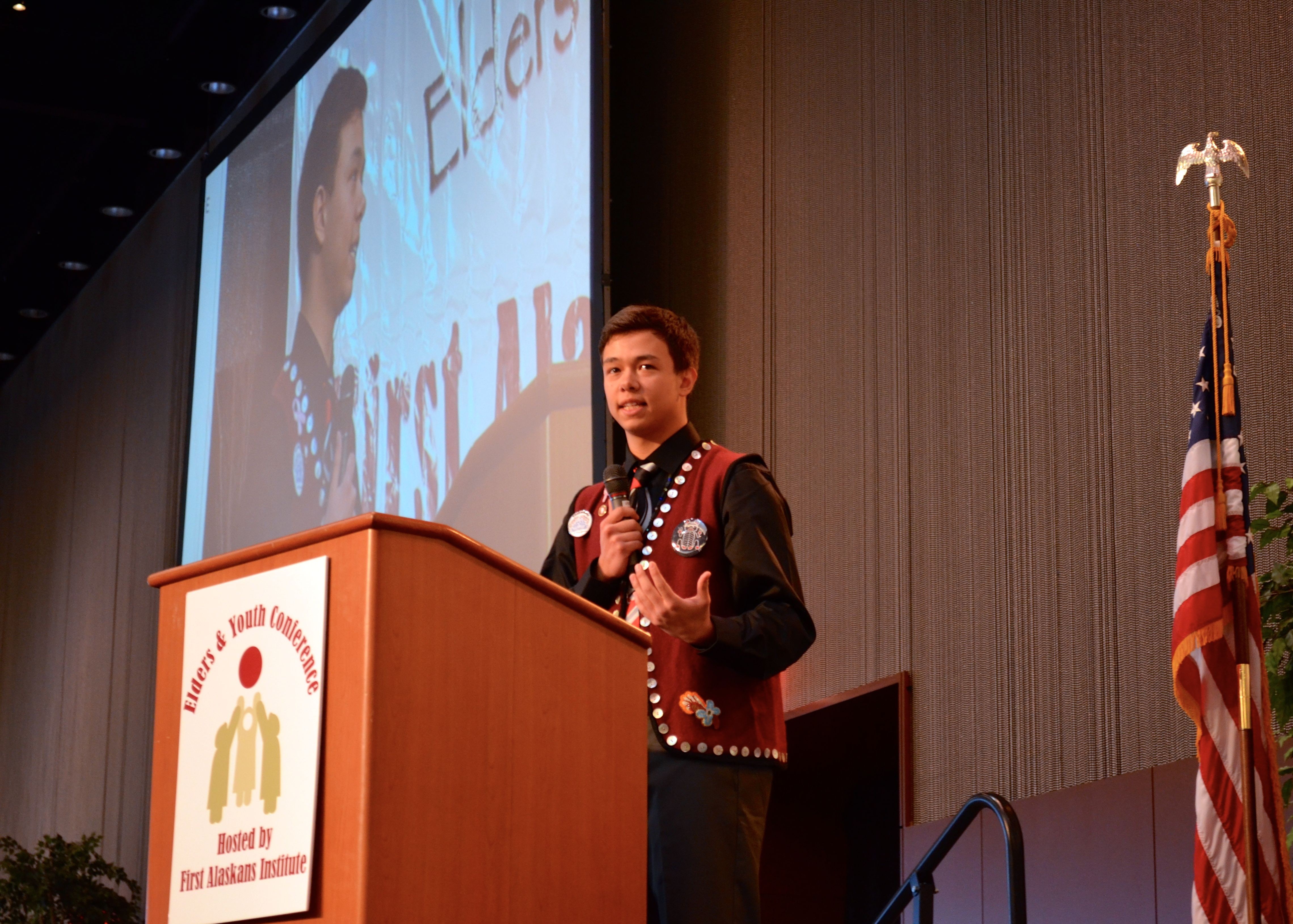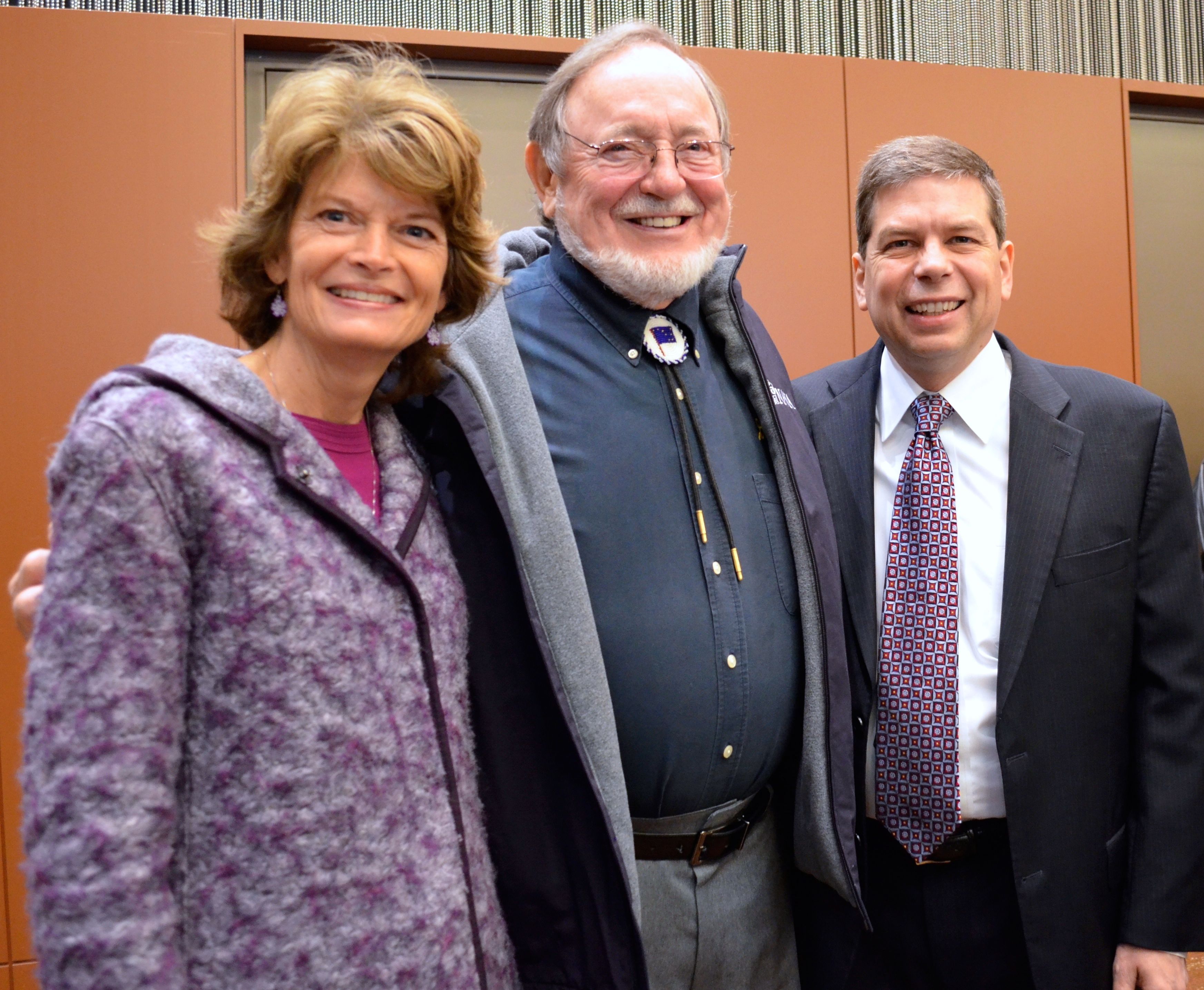
The 30th annual Elders and Youth Conference began Monday in Anchorage. The gathering is hosted by the First Alaskans Institute each year during the same week as the Alaska Federation of Natives convention.

The conference opened with Dena’ina dancers and a blessing from Eklutna Tribal Council President Lee Stephan. First Alaskans President and CEO Liz Medicine Crow from Kake and board chair Willie Hensley welcomed conference participants. Rep. Don Young and Sens. Lisa Murkowski and Mark Begich each took the stage to give opening remarks. Representing the White House, Associate Director of Intergovernmental Affairs Raina Thiele, originally from Pedro Bay, also addressed the conference.
When it came time for the keynote speeches, 17-year-old Devlin Anderstrom from Yakutat gave one to remember. Anderstrom introduced himself in his Tlingit language and then gave his entire nine minute speech in it, never once slipping into English until he gave the speech a second time.
People in the audience turned to each other and with wowed faces, they nodded and smiled. Anderstrom’s speech was no small feat.
There are only a few hundred Tlingit speakers left and most of them are more than 60 years old. Anderstrom, who is a senior at Yakutat High School, learned some of the language growing up. He left Alaska as a young boy and didn’t return until he was 12.
“I’ve lived in downtown Denver, the suburbs in northern California, even a small rural community in Nebraska. When I left home I knew the entire time that home was where I belonged and it was my place to be,” Anderstrom says.
Growing up, Anderstrom says he spent a lot of time around elders who spoke the language fluently. He began his study of Tlingit in earnest after he moved back home to Yakutat. Just this year, he started taking Lance Twitchell’s Tlingit language class through the University of Alaska Southeast.
Anderstrom says one of the reasons he has been so dedicated to learning Tlingit is because some cultural values and ideas can only be truly expressed in their original language.
“One of them would be haashagoon. So, haashagoon, it’s our ancestors and at the same time it’s the future generations, like, everything that we were and everything that we will be,”Anderstrom says. “It’s just kind of a hard concept to explain.”
And it’s not just the Tlingit language that Anderstrom feels compelled to learn. He’s also Iñupiaq, and Ahtna and Tanacross Athabaskan and he’s trying to learn those languages.
“Right now, Tlingit is the language I know best. It’s the only language I could have made a speech like that in. But I’ve also started to learn other languages as well, Eyak, Ahtna and Inupiaq,” Anderstrom says. “My goal is to learn as much as I can. I want to try to help preserve everybody’s language because I think everybody in the state deserves that, everybody that’s Alaska Native.”
True to the spirit of his role as a youth at the conference, Anderstrom brings optimism to the conversation. He doesn’t think that Alaska Native languages can ever be completely lost.
“I think language is a big part of culture, for me, and it’s really a hard hit for any culture to take to lose their language,” Anderstrom says. “But I don’t think it’s necessarily the end game, I don’t think it’s game over when a language is lost because like Eyak, a lot of language can be brought back at least partially through all the documented resources that we have. We just have to pull together and I think we can avoid language death all together.”
Anderstrom gave the youth keynote address after elder Fred John’s keynote address. The conference room at the Dena’ina center had 1,300 chairs set up and nearly all of them were full within an hour of starting the conference.
